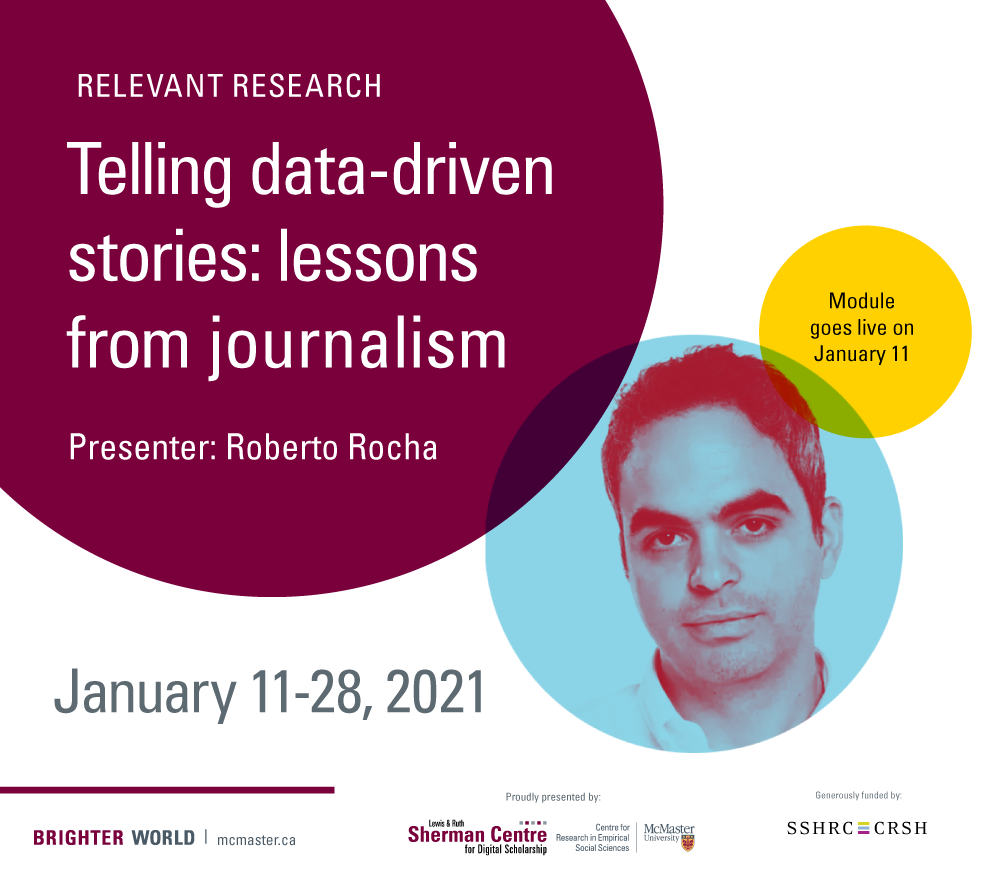
Telling a data-driven story from start to finish.
A Relevant Research Series workshop prepared by Roberto Rocha, Data Journalist, CBC/Radio Canada.
In this workshop, you’ll be taken through the steps of creating a data-driven story, from obtaining the data, to making sense of it, to writing an outline of a final article. Each step of the way, you’ll be prompted to consider and implement storytelling elements in the service of creating a data-driven story.
Why is storytelling so important?
Google “storytelling data science” and you’ll see thousands of articles discussing the importance of storytelling skills for people who work with data and analytics. Look up why Jeff Bezos banned PowerPoint presentations in meetings.
We’ll be using Google Community Mobility data for Canadian provinces to see which places have changed their movements the most (or least) throughout the Covid-19 pandemic so far. We’ll perform some exploratory analysis and visualization to find interesting trends in the data, and then we’ll build a compelling story around it.
This is a process that has worked for me during seven years as a data journalist. However, it’s not necessarily the best method and certainly not the only method. I developed it over years of trial and error, borrowing parts from other news organizations and from data science courses I’ve taken.
In general, the steps are:
- Obtain the data and software
- Do some basic exploratory analysis with common software like Google Sheets to inspect the data for anomalies and errors that need to be addressed
- Think about how the data was collected and what biases could be embedded in it
- Do a more in-depth exploratory visualization using analysis software like Tableau Public
- Identify possible story angles and find characters to humanize the numbers
Proceed to the Keynote page for a discussion of how data and storytelling have been used together to educate the public on the COVID-19 pandemic.